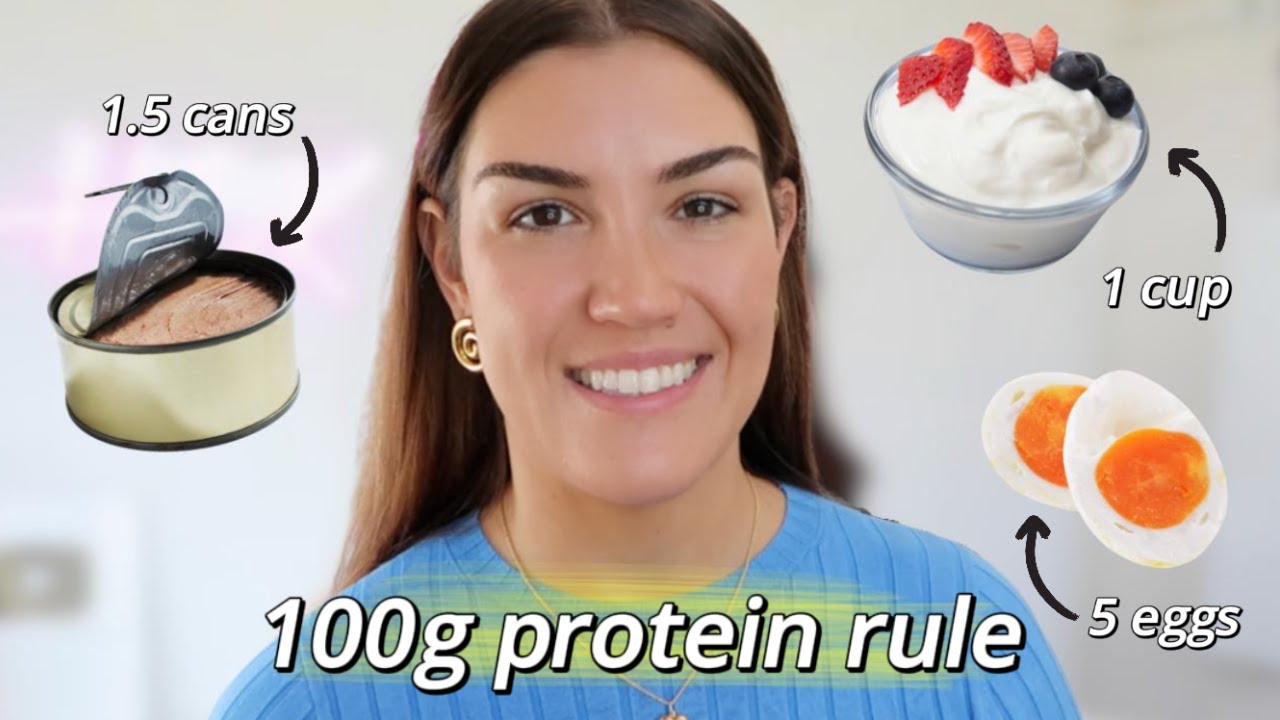- Understanding Insulin Resistance and Its Link to Diet
- The 100g Protein Rule: Why Protein Matters
- Benefits of Prioritizing Protein Over Calories
- Practical Strategies for Increasing Protein Intake
- Common Myths About Protein and Diet
Understanding insulin resistance is critical for anyone aiming to improve their health and metabolic function. Insulin resistance occurs when the body’s cells become less sensitive to insulin, a hormone that helps regulate blood sugar levels. This reduced sensitivity can lead to elevated glucose levels and is often linked with obesity, type 2 diabetes, and metabolic syndrome. Research indicates that dietary choices can significantly influence insulin sensitivity. Among these choices, the macronutrient profile, particularly the intake of protein, plays a vital role.
The 100g protein rule is a guideline suggesting that individuals should aim to consume around 100 grams of protein daily, regardless of total caloric intake. While this figure may differ depending on individual factors like activity level and specific health goals, it serves as a useful benchmark. Protein has various roles in muscle repair, hormone production, and immune function. More importantly, it has a substantial influence on metabolic health. Foods high in protein have been shown to induce satiety, helping to curb excessive calorie consumption, which is paramount for managing susceptibility to insulin resistance.
Prioritizing protein over calories has several benefits. Protein-rich diets can help regulate blood sugar levels more effectively than carbohydrate-heavy diets. This occurs because protein has a lower glycemic index and can promote a more gradual release of glucose into the bloodstream. Moreover, protein tends not to cause insulin spikes, thereby reducing the strain on the pancreas and supporting healthier insulin levels. Studies have shown that people who consume more protein tend to have better body composition, increased muscle mass, and lower fat mass. In turn, improved body composition is linked with enhanced insulin sensitivity.
To increase protein intake effectively, practical strategies can be implemented. Incorporating protein-rich foods such as lean meats, fish, dairy products, legumes, and nuts can help diversify one’s diet without excessive calorie counting. Meal planning can facilitate the inclusion of protein sources in every meal and snack. For example, adding Greek yogurt to breakfast, snacking on almonds, or opting for chicken in salads can enrich the protein content of daily meals. Supplements can also be beneficial but should primarily complement whole food sources, not replace them.
There are common myths surrounding protein consumption that deserve attention. One prevalent misconception is that protein is only crucial for bodybuilders or athletes. In reality, everyone can benefit from adequate protein intake, especially as they age. As muscle mass naturally declines over time, increasing protein can help preserve muscle and support metabolic health. Another myth is that protein consumption leads to kidney damage; however, in individuals with healthy kidney function, moderate to high protein intake is safe and beneficial. Understanding these myths can help individuals make informed choices regarding their diets.
Understanding insulin resistance and the 100g protein rule offers valuable insights into managing dietary practices more effectively. Adopting a protein-focused approach provides numerous health benefits that transcend mere calorie limitations. As people become more aware of these dietary principles, they are better equipped to make choices conducive to overall health and well-being. This method not only simplifies meal planning but also fosters a sustainable and enjoyable dietary experience.
To grasp the essence of managing insulin resistance, recognizing the relationship between protein and blood sugar control is vital. Protein affects glucagon, another hormone that works oppositely to insulin. This balance plays a key role in metabolic health. Higher protein diets can promote steady energy levels without drastic ups and downs typical of higher-carbohydrate diets. It cultivates a stable environment for metabolic processes to flourish, further alleviating symptoms linked to insulin resistance.
Additionally, protein-rich foods often contain essential vitamins and minerals that contribute positively to metabolic health. Foods such as legumes, nuts, and seeds provide beneficial fiber, which also aids in blood sugar control by slowing glucose absorption. This multifaceted approach to incorporating more protein into meals demonstrates not only its direct benefits but also its complementary nature with other nutrients.
While focusing on protein has many advantages, a balanced approach remains crucial. For optimal health, it’s important to incorporate various nutrients. That said, protein should be placed at the forefront to gradually strengthen insulin sensitivity. It’s advisable to monitor other macronutrients, particularly carbohydrates and fats, ensuring that they complement those protein goals rather than detract from them. Simple adjustments, such as choosing whole food sources over processed options, can yield significant improvements.
For individuals with specific health concerns or dietary restrictions, customized plans may be necessary. Workouts that focus on building muscle mass can further enhance the benefits of a protein-centric diet. Resistance training, combined with increased protein intake, creates a powerful synergy that enhances overall metabolic health. It promotes muscle synthesis while supporting fat loss, both of which contribute to better insulin sensitivity over time.
In everyday practice, personalizing protein intake can be straightforward. For some, this may mean gradually increasing protein portions at each meal until reaching a targeted daily intake. Batch cooking protein-rich meals can also help streamline the process, minimizing reliance on convenience foods that are often lower in protein. Shopping lists can be crafted to prioritize high-protein items, making it easier to stay on track while grocery shopping.
The 100g protein rule highlights a tangible, achievable goal for anyone aiming to improve their dietary habits. Whether for health reasons, fitness goals, or general well-being, this guideline serves as a strong foundation. The primary focus shifts from counting calories to being more cognizant of nutrient density, thereby fostering healthier dietary choices.
Moreover, assessment tools and resources can be utilized to track protein intake without oversimplifying the complexity of nutrition. Applications and food diaries can facilitate awareness and inform better choices in real-time. Notably, this shift in mindset and focus encourages sustainable habits that can carry through various phases of life while continually enhancing health.
Finally, the discourse around protein intake is often fraught with conflicting information. Some argue that excessive protein can lead to health complications, but as long as an individual maintains a balanced diet, this concern is generally unfounded. Understanding how protein interacts with other nutrients can dispel these fears and reveal its place as a cornerstone in dietary health.
By embracing the principles aligned with the 100g protein rule, individuals can take significant strides toward better metabolic health and improved insulin sensitivity. This approach not only aids physical health but ultimately influences overall life quality. As dietary awareness grows, the importance of focusing on protein’s role continues to shine, further validating the merits of this guideline in nutritional practices.
*****
Source Description
Over 70% of women I work with are eating less than half the protein their body needs. And it’s one of the biggest reasons they’re tired, craving sugar, and struggling to lose fat, even while eating fewer calories.
In this video, I’ll show you why protein is the most important macronutrient for reversing insulin resistance, balancing blood sugar, and keeping you full for hours.
You’ll learn how much you really need, what 100 grams of protein looks like in real food, and why animal protein is more effective than plant protein.
Protein powder I recommend (20% off) https://hckait.com/equip
⸻
🩸 3-Day Blood Sugar Reset → https://healthcoachkait.com/bloodsugarreset
⚠️ 7-Day Insulin Resistance Masterclass → https://healthcoachkait.com/IRmasterclass
🎧 Healthy Not Complicated Podcast → https://hckait.com/podcast
Hi, I’m Kait Malthaner (aka Health Coach Kait), a certified health and nutrition coach specializing in blood sugar balance and reversing insulin resistance. I help you simplify health so you can naturally lower blood sugar, A1c, and blood pressure, lose stubborn belly fat, and feel your best again. Getting healthy doesn’t have to be complicated. Small changes lead to big results.
⸻
Recommended Products & Discounts
🩸 At-Home Insulin Resistance Test (Code: KAIT10) → https://hckait.com/getsowell
🧂 Electrolytes (Code: HCK15) → https://hckait.com/sodiielectrolytes
💫 Berberine (Code: KAIT10) → https://hckait.com/getsobalanced
🩷 Inositol (Code: KAIT10) → https://hckait.com/getsosynced
🥤 Blood Sugar Drinks (Code: KAIT15) → https://hckait.com/goodidea
💪 Protein Powder (Code: HCK15) → https://hckait.com/protein
🔥 CKM (Code: KAIT15) → https://hckait.com/ckm
📱 CGM (Code: ULTRAKAIT15) → https://hckait.com/cgm
⸻
Timestamps
0:00 You’re not eating enough protein
1:21 How much protein your body really needs
2:44 The consequences of not eating enough protein
3:54 How to measure protein without a scale or app
5:18 Animal vs plant protein: let’s settle the debate
6:28 Why beans and legumes aren’t ideal for insulin resistance
7:00 What 100g in a day looks like
⸻
Disclaimer:
This video is for informational purposes only and is not a substitute for professional medical advice. Always consult your doctor regarding any medical concerns. Some links are affiliate links, meaning I may earn a small commission at no extra cost to you. I only recommend products I personally use, trust, and love.


